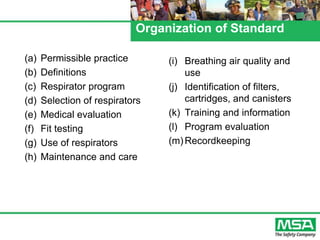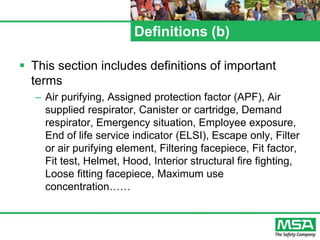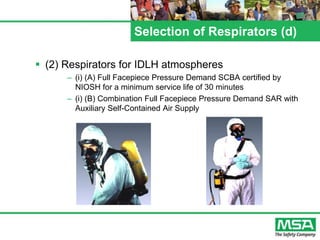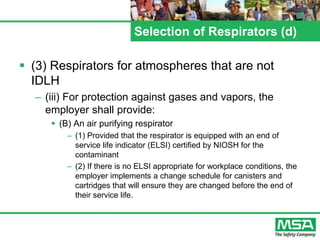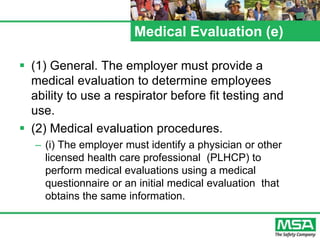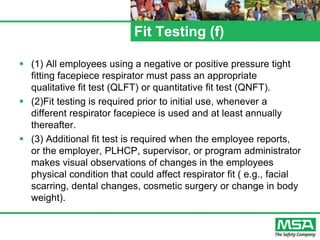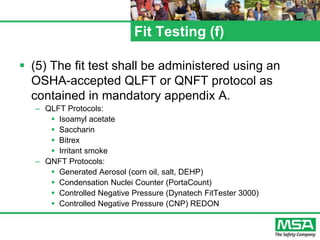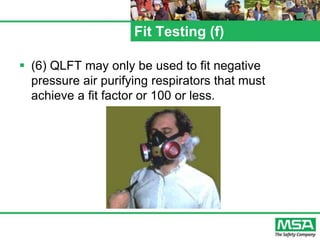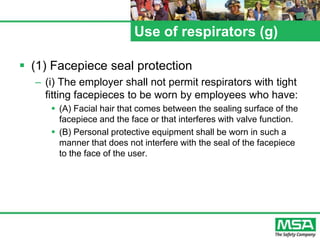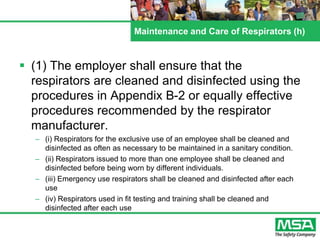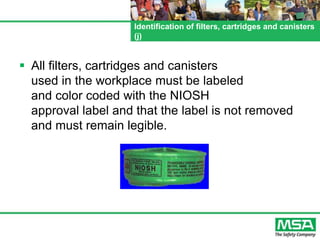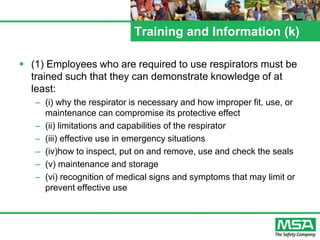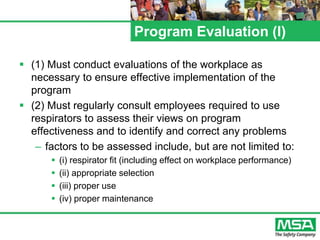This document summarizes the major requirements of OSHA's respiratory protection standard 29 CFR 1910.134. It outlines the organization of the standard and key requirements for employers including developing a written program, conducting hazard assessments to select appropriate respirators, implementing medical evaluation and fit testing procedures, training employees, and maintaining records. Employers must ensure respirators are properly used, maintained and that the program is regularly evaluated. The goal is to protect workers by providing respiratory protection when effective engineering controls are not feasible.


